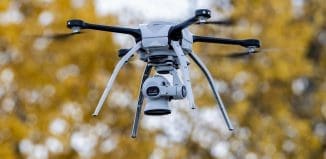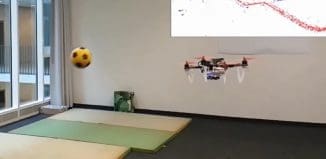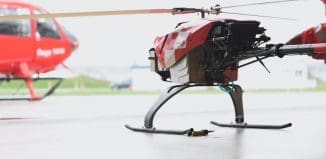Robotic Solution for Tunnel Warfare
This post is also available in:  עברית (Hebrew)
עברית (Hebrew)
Some U.S. Army leaders believe future wars will take place underground and in tunnels. A new Swiss robot may be a solution for this kind of warfare. The four-legged robot named ANYmal which was tested exploring the tunnels below Zurich, could by the future of maintenance work and military missions.
ANYmal, developed by Switzerland-based ANYbotics and the ETH Zurich Robotic Systems Lab, resembles the BigDog family of robots by Boston Dynamics. Like them, ANYmal is bouncing mess of limbs that results in a sort of unsettling gait. Special actuators and gait-balancing software enable the whole production, and if need be, a limb can rotate a 360 degrees, according to c4isrnet.com.
The robot reaches a speed of around 2 mph. Its battery holds power for three hours, and the robot can lower itself onto a charging station when it needs to power up. It can be carried into place on a small vehicle or by a couple of people.
The robot’s limbs can push buttons and push open doors, though it would likely take extra modifications to get an ANYmal to manipulate doorknobs.
For the tunnel exploration, the 20-inch tall robot was lowered into place, and then guided by a joystick. Autonomous movement is possible, but using a remote control allowed the human observers to keep a closer eye on what, exactly, the machine was doing underground.
The robot normally navigates by LIDAR and 3D mapping of the surrounding environment. To better comprehend the terrain in low-light environments, it is also exploring haptic sensors at the end of its feet, providing a sense of touch.
While its current projects include tunnel exploration and oil platform inspections, the robot offers three worthwhile trends for the military sector. First, dog-shaped robots are going to evolve as industrial tools, and in all the areas that industrial work overlaps with military functioning, like base maintenance or ship inspections, there is likely an easy role for these robots to take on.
Second, as military forces move in human-built environments they should consider the possibility that remote or autonomous machines, legged as well as winged, could also be traversing in the same way.
Finally, enterprising commanders looking to incorporate robots as military scouts or even armed tools should be paying close attention to what’s being developed in the commercial world, since adversaries without dedicated national budgets are likely looking in the same places.






























